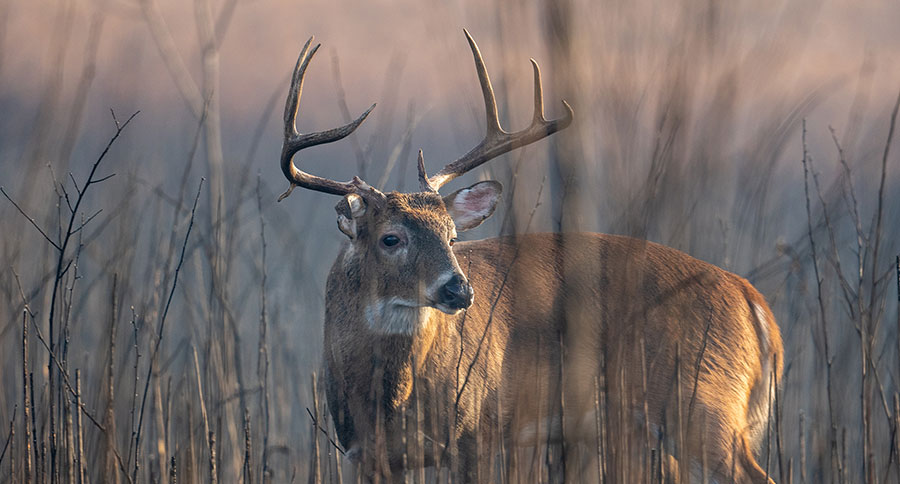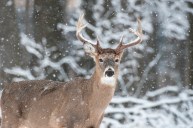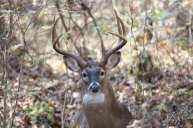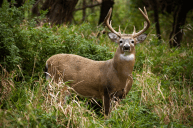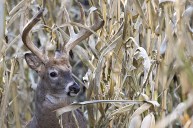Deer habitat zones or "need zones" are as important to the hunter as they are to the deer. Here's what they are and where you can find them.
Every animal needs things to survive, and every hunter can (and should) use that knowledge to their advantage.
Just so we're clear, when we say deer habitat zone, we're addressing areas of favorable deer habitat on your hunting property. Spots they like, need, and seek out to feel comfortable.
As a whitetail deer hunter, I've spent much of the last 40 years trying to figure out where they prefer to be and why. I've considered food sources, seasonal changes, hunting pressure, hunting strategies, and odds of hunting success. In all this time I've learned quite a few things about America's favorite game animal come autumn.
I'll break them down into several deer need zones, and help explain why they're important.
You can view this in terms of five basic zones, or areas, that deer use in different and varying ways to feel safe, rest, eat, move, and seek in moments of stress. There are multiple factors that influence these areas, not the least of these being human scent.
Of course, we have wants and needs of our own when it comes to hunting opportunities. Things like finding areas that deer are using frequently. In other words, we have to (at some point) get out there and spy on them.
Trail cameras have become one of our best tools in this, the modern age of deer hunting, but how do you keep deer, and especially mature deer, on your hunting property without constantly feeling like you are kicking them out?
You can also use maps, Google Earth, OnX Hunt, and other helpful resources. But the big thing is this: obviously scouting helps, and here is what you should be looking for.
Food
The farming community is an integral part of modern society, and for the deer hunter it is one of the greatest reasons why we see so many deer in certain areas. For the modern farmer, having hunters on their property or hunting on nearby properties, even small properties, can be the difference so that they can maintain the balance of their own harvest compared to the harvest that we as deer hunters truly desire: a full freezer of fresh venison.
But not all deer or deer hunters have these crop fields nearby, which means that we need to zoom in on the animal's natural food sources. One of their favorite is the acorn. Hunting oaks that yield a positive growth of these rich, ripe nuts can mean the difference between tagging a large, healthy deer and one that is much younger and skinnier. When the acorns drop, deer will find them. Also, don't forget about beechnuts, hickory nuts, and even pecans.
Corn is notoriously great for deer, and hunting around corn fields is highly productive. But many corn fields have been cut and harvested by the time deer season rolls around. That can be a double edged sword: there is still some leftover food in the fields, but with the cover gone, the deer have to be wary.
We can't forget the food plots that many deer hunters utilize and now swear by. While farm grown corn and other grains make for substantial deer attractors, they are still not as fundamentally beneficial as the food plot, which has one soul purpose: to attract deer and other wildlife. Some hunters may get a burr under their saddle after reading this, but it's true.
Growing brassicas, oats, clover, and even winter peas on your hunting property definitely attracts deer, and it's pretty darn obvious that these manmade "whitetail gardens" work quite well.
Whether the food is planted or natural, scouting means finding these sources, knowing and remembering where they were the year before, and placing stands in areas where the deer are traveling to and from it.
Remember, just hunting a corn field will yield you little once the combine has run its course, whereas a stand over an oak or hickory swamp will hold deer looking for food the rest of the winter. For bowhunters, a stand needs only to be in range of today's high quality archery equipment. And for firearms hunters? Well, anywhere within 100 yards is good, as long as you've properly cleared your shooting lanes.
For rifle hunting a cut cornfield, which can easily reach out to 250 yards, don't forget the golden rule: know your target and what's beyond it.
Find the food, and your harvest odds increase by leaps and bounds.
Bedding

This is where deer want to go after they've filled their bellies with the aforementioned food. Since deer are most active at dawn and dusk (at least before the start of firearms season), then it is imperative to be in your stand before the first bit of sunlight. Many times deer feed actively in the few hours ahead of sunrise, sometimes all night, and are ready for a break in the morning.
I've found 8-10 beds melted right to the ground through the snow while shed hunting in February, usually in or near the thorn apple that grows wild here in New York. It's almost always near some kind of cover towards the north side, since the wind direction at that time of the year is predominately from the north.
The bottom line is that searching the area for these bedding spots can be done by knowing your property and looking at maps as much as it can be done by actually, physically scouting it. Deer want to stay close to their food source when they aren't being pressured. Naturally, they're going to cozy up and catch some shuteye within reasonable proximity.
Deer (especially bucks) that are resting on beds like to have their "backs to the wall" so to speak, letting the wind arrive from behind them. That way they can smell danger from behind and see danger from ahead. If you use this info, you can decipher some things. Where deer rest, which way they're likely to face, and the pathways they may use to travel between them become clearer.
Good treestand locations subvert the area to take advantage of deer movement in and around bedding areas and make the best of the opportunity to tag out.
Cover
We all see deer in the summer months. Our yard, the park, ball fields, the golf course, and other open areas are full of them it seems. But the honest truth is that deer don't like to be exposed for too long. The deer that we hunt in the more remote and rural areas tend to dislike exposure even more.
Thick cover is where the deer slow down to look, smell, and relax a bit. It makes sense, because it's where they can blend in and virtually disappear. It's why our fathers and grandfathers taught us to look for deer parts, instead of the whole deer. If you can see the twitch of a tail or flick of an ear, you're on to something.
Hunting these thickets and brambles takes some work, and frankly, sometimes isn't really an option. Many hunters determine thick cover to be off limits, a place where they allow deer to go freely without pressure. Choosing a stand location based solely on cover can seem like an exercise in futility.
If you're left without other options, clearing shooting lanes is paramount, but by all means, don't clear the area like you are going to build a house. The best method is to tag team the spot with one person in the stand eyeing the obvious areas of interest, and another on the ground with a pole saw and loppers.
This is where a hunter has to be on his "A" game. Keep a stand downwind of bedding, remain scent free, and learn to move very little. This is a true sanctuary area, and your actions could affect deer hunting in the worst ways.
Escape Routes
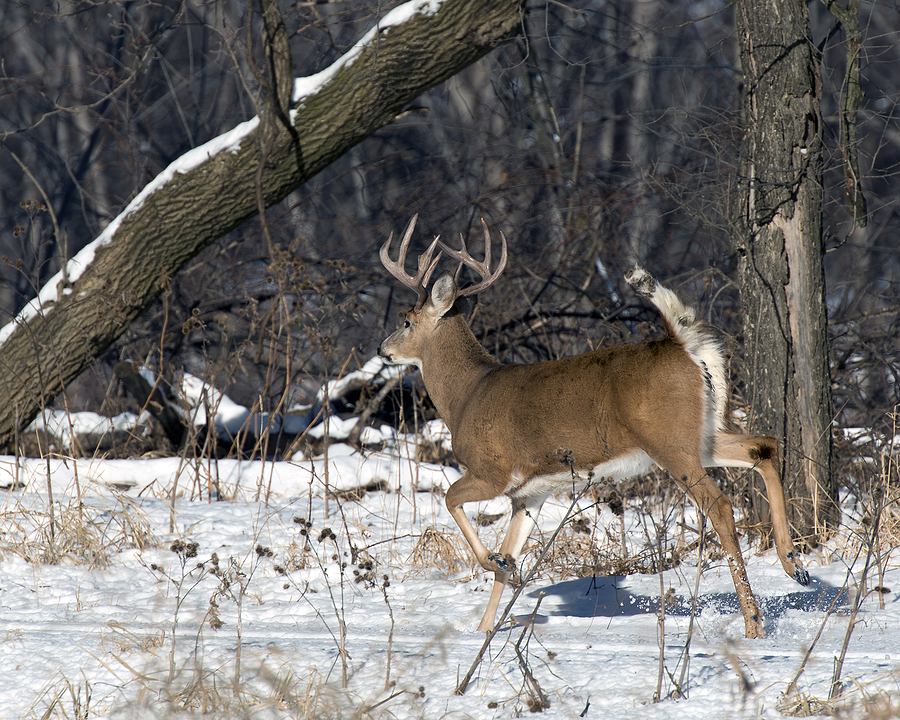
Knowing and using escape routes are where mature deer excel. Big bucks haven't survived for this long by never learning how to get out of a dangerous situation, even during the rut. Observing fleeing deer is a matter of experience, and Lord knows we all get a big dose. They will often use the thickest, nastiest cover as an escape route, and always away from the direction that the most pressure comes from. But they'll also move in a direction that quickly puts them downwind of whatever disturbed them, even if it means circling back around.
Interestingly enough, some bucks have learned that one of the best escape plans involves little action on their part. They don't flee unless they absolutely have to. They will wait you out to see what kind of a threat you really are before making their move, no matter what. It is the oldest rule in my personal hunting book: they can see you, hear you, and smell you before you ever know that they are there. They'll even escape without a clue from you, so knowing where they might go is huge.
Mostly, we make the best use of this knowledge when it comes to a deer drive, and deer drives works best when pushing bedding areas.
Over time we learned that deer in our hunting area would use a common hummock of trees and thick cover in one specific spot to rest out the pressure from the surrounding area. After years of trial and error, we learned that many would do what we wanted, but many would also "squirt" out the sides at right angles to our movement.
To belay that fact, we started having one driver walk those areas just to prevent deer from escaping through them, and we found that our success rate went up by leaps and bounds. You don't need stand sites above every conceivable escape route hot spot, you just have to know what the deer want, and in some cases, prevent them from getting it.
Travel Corridors
Whether you've hunted it for years or are totally new to a property, deer travel routes are usually pretty obvious. It's sometimes sheer logistics. Set up a treestand where a game trail occurs. Most of the time, however, you will have to be more selective.
Patterning mature bucks based on specific travel routes can still be unfruitful. The rut changes things, weather changes things, and plenty of other factors can cause big shifts. Still, knowing the paths commonly taken can help out. Buck scrapes are typically found on or near travel corridors, and they are as good of spots as any to hunt.
Putting It All Together
Relating your current situation to a past hunt can reveal what this year's crop of deer will do, but not always. One of the biggest reasons why we hunt the same stand over and over is because we've had success doing so. And one of the biggest factors that leads to this success is the stand's placement in accordance with these need zones.
From what I've seen and experienced, these are the most common deer need zones, and I've learned what they mean to the hunter. Finding them is up to each individual based on the hunting land that they use. There's really just one more point to get across.
Don't wait until the season gets too close to make these kind of discoveries and determinations. If you do, you're risking it all. But play your cards right (and early), and you'll see improvement season after season.
Looking for a little more or even hot lunch for your hunting blind? Follow my webpage, or on Facebook and Twitter.
NEXT: 5 THINGS TO THINK ABOUT WHEN YOU CUT SHOOTING LANES
WATCH
